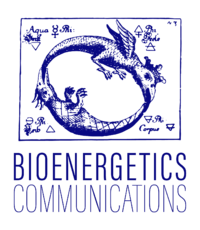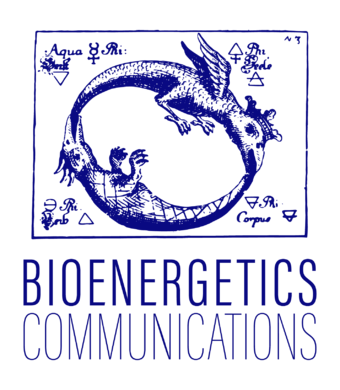- Bioenergetics Communications is the Open Science journal on bioenergetics and mitochondrial physiology with Living Communications
 - ISSN 2791-4690
- ISSN 2791-4690
BEC authors
- Bioenergetics Communications is the Oroboros Ecosystem journal for publishing and sharing scientific and technical advances in bioenergetics, mitochondrial physiology, and particularly high-resolution respirometry
:::::::: »Bioenerg Commun«
Information for authors
Work in progress
Format
- Manuscripts in English
- Publications in Bioenergetics Communications include a title, authors and affiliations, author contributions, an introduction (presenting the purpose of the publication), materials and methods, results, a discussion or conclusions, references, and acknowledgements. However, it is not necessary to follow a fixed format, e.g., the authors may choose to place the materials and methods section before the results or at the end before the references, and the discussion section can be separated from the results, or both sections can be merged. Thus authors can focus on the quality of their work instead of following the stereotype of a journal format.
- The publications are accompanied by a folder with the original data (e.g. DLD files with the raw data).
Short communications
- Short communications - have the format of extended abstracts, without belonging to a specific conference. Compare: Extended_abstracts. Extended abstracts posted in MitoFit Preprint Archives in the context of any conference may be submitted to Bioenergetics Communications, if the contents is suitable.
- Comments - provide critical discussions of publications, includig summaries of journal clubs.
Communications
- Technical communications - contain instrumental and methodological details on HRR particularly focused on quality control
- Innovations - introduce tests of new instrumental developments or novel applications
- SUIT protocols - present the concept of a specific SUIT protocol, exceeding the MitoPedia description and containing more detail than typical methods sections in other publications
- Negative results - discuss findings on methodological difficulties that failed to lead to a relevant innovation
- Regular papers - extended by the concept of living communications
- Monographs - reviews and textbooks
- Topic series - communications collected according to specific research topics
Possibilities
- It is possible to publish data without statistical relevance per se. If follow-up experiments are done later in other laboratories, it may be possible to compare the previously published data with the new data. Several small data sets made available from many laboratories in a methodologically consistent and reproducible way result in large data sets that are statistically more relevant.
Living communications
- The concept of living communications persues a novel re-print culture of scientific communication, addressing the challenge of elaborating validated results and tested concepts versus sharing important preliminary and controversial contributions. Living communications provide a pathway along the scientific culture of lively debate towards tested and trusted milestones of research, from pre-print to re-print, from initial steps to next steps.
From preprint to publication
- The preprint is part of a stepwise process:
- MitoFit Preprint Archives is the fast lane of Open Access communication without peer review. Authors should indicate if the preprint is considered for Bioenergetics Communications.
- A MitoFit preprint posted by the authors as a potential publication in Bioenergetics Communications is immediately delegated to our Associate Editors or Section Editors:
- Communication with the authors to plan the non-anonymous Open Peer Review process. Up to three reviewers should be suggested by the authors.
BEC versions
- External review should lead quickly to publication in Bioenergetics Communications including the correspondence with the reviewer(s) as an appended discussion and reference to the preprint - without the option for reviewers to insist on additional experiments, but strict focus on the quality of the presently provided information.
- Reviewers and editors may encourage follow-up interlaboratory collaborations, with extended information added by the original authors or new collaborators; contributions by reviewers may be integrated and reviewers listed as coauthors and declared as such in the section 'Author contributions' upon mutual agreement between original authors and reviewers;
- Folow-up: Manuscripts may be updated and extended - particularly with added information and coauthors from other laboratories.
Discussion
- The notion of a "living publication" (Editor: "living communication") seems most applicable to this work (Editor: MitoEAGLE position paper 'States and rates') as it involves recommendations, guidelines, and references to the ever-evolving field of mitochondrial bioenergetics. This would remove the difficulties and/or concerns of individuals referring or citing older and/or outdated works, like what can happen in the US with physical activity guidelines or consensus statements. - Christopher L Axelrod 2020-04-22





